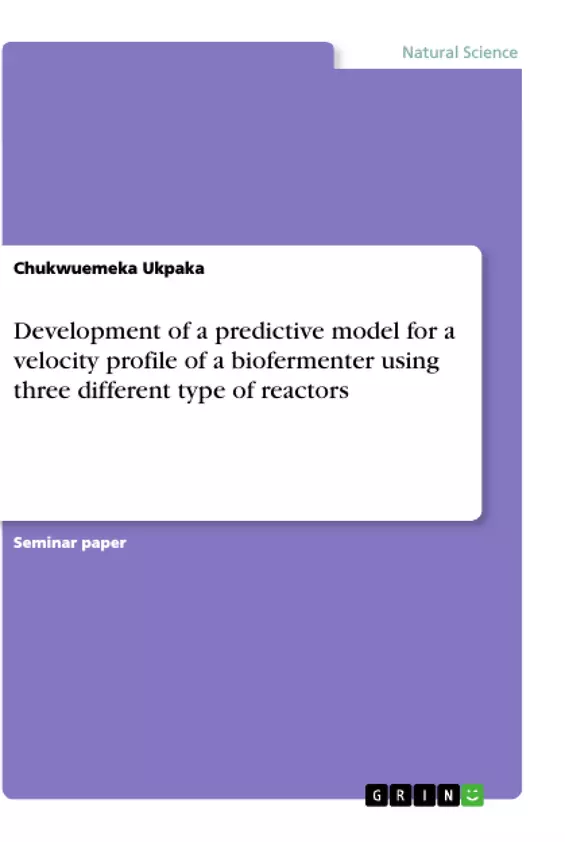This research contains the modeling of the velocity profile of a bioreactor with recycle; the concept of biochemical process. The biochemical process adopted is fermentation and a plug-flow fermenter (PFF) was taken as a case study. The derivation of workable model equations for monitoring and predicting the velocity profile of a PFF were obtained, together with obtaining the model equations for investigating the effect of microbial and substrate concentrations on the discharge coefficient, bioreactor’s volume. Constant data were sourced from literatures, together with hypothetical values to simulate the derived model equations using Mathlab.
Effect of biomass concentration on discharge coefficient, shows that increase in biomass concentration brings a corresponding increase in the discharge coefficient as well as the bioreactor’s volume revealed that substrate concentration is depleting alongside with bioreactor’s volume follows the same trend of change when substrate concentration is decreasing irrespective of whether the length or area of the bioreactor is varied. The effect of microbial concentration on bioreactor volume when area and length of bioreactor are varied reveals that the process followed same trend only that there is a presence of lag phase upon the influence of inhibitors.
Inhaltsverzeichnis (Table of Contents)
- INTRODUCTION
- MATERIAL AND METHODS.
- Derivation of model equations
- RESULTS AND DISCUSSION.....
- CONCLUSIONS.
- NOMENCLATURE...
- REFERENCES.
Zielsetzung und Themenschwerpunkte (Objectives and Key Themes)
This research focuses on modeling the velocity profile of a bioreactor with recycle, specifically a plug-flow fermenter (PFF), in the context of fermentation as a biochemical process. The study aims to derive workable model equations for monitoring and predicting the velocity profile of the PFF and investigate the effects of microbial and substrate concentrations on the discharge coefficient and bioreactor volume. The research utilizes constant data from literature, as well as hypothetical values, to simulate the derived model equations using MATLAB.
- Modeling the velocity profile of a bioreactor with recycle.
- Investigating the effects of microbial and substrate concentrations on the discharge coefficient and bioreactor volume.
- Deriving workable model equations for monitoring and predicting the velocity profile of a PFF.
- Simulating the derived model equations using MATLAB.
- Understanding the dynamics of fermentation processes in a plug-flow fermenter.
Zusammenfassung der Kapitel (Chapter Summaries)
The Introduction chapter provides a comprehensive overview of bioreactors and fermentation processes, highlighting the significance of monitoring and predicting the velocity profile of a bioreactor. It introduces the concept of a plug-flow fermenter with recycle and its importance in industrial settings. The chapter also discusses the limitations of the study, focusing on the derivation of workable model equations and their simulation using MATLAB.
The Material and Methods chapter outlines the derivation of model equations for monitoring the velocity profile of a plug-flow fermenter. It presents a detailed explanation of the chosen methodology and the theoretical foundation of the model equations. The chapter also discusses the use of MATLAB for simulating the derived model equations.
Schlüsselwörter (Keywords)
The key terms and focus topics of this research include bioreactor modeling, velocity profile, plug-flow fermenter, recycle, fermentation, microbial concentration, substrate concentration, discharge coefficient, bioreactor volume, MATLAB simulation.
- Quote paper
- Chukwuemeka Ukpaka (Author), 2020, Development of a predictive model for a velocity profile of a biofermenter using three different type of reactors, Munich, GRIN Verlag, https://www.hausarbeiten.de/document/977999


